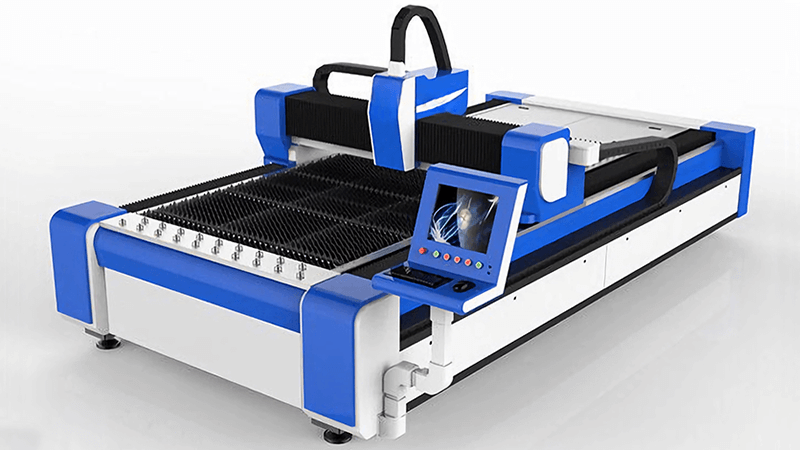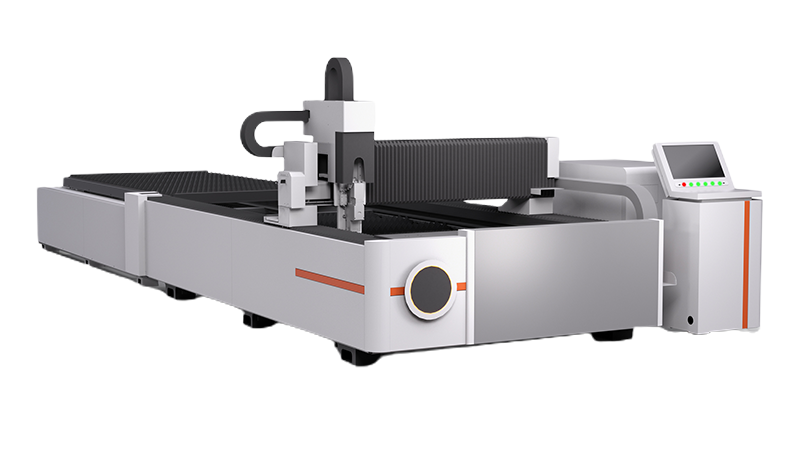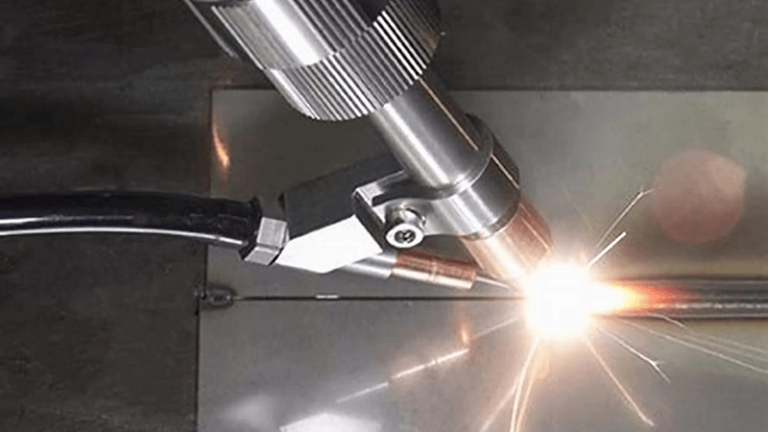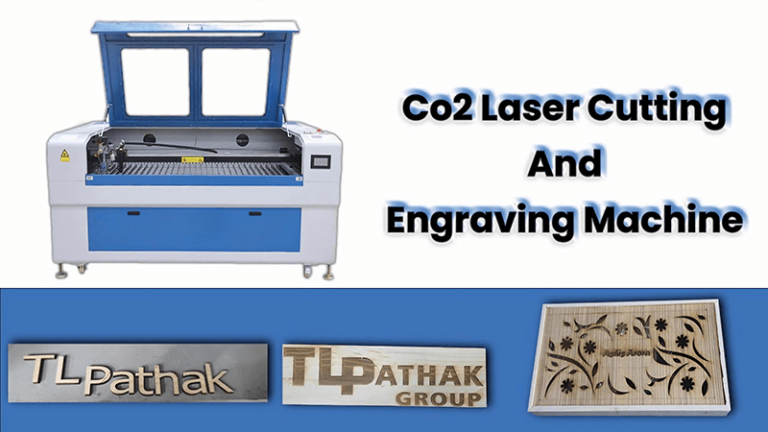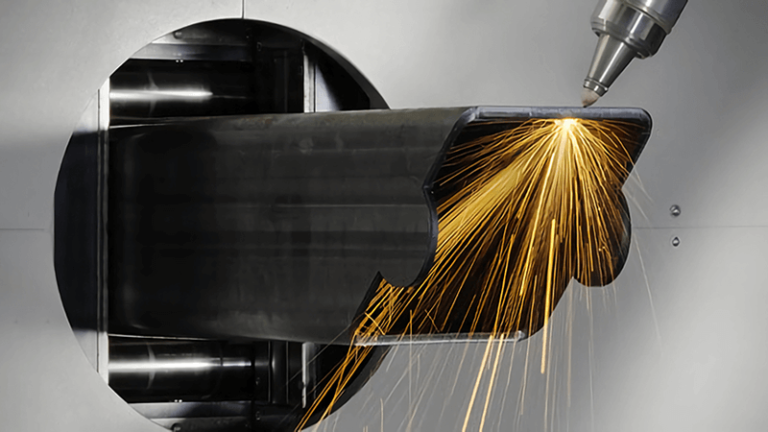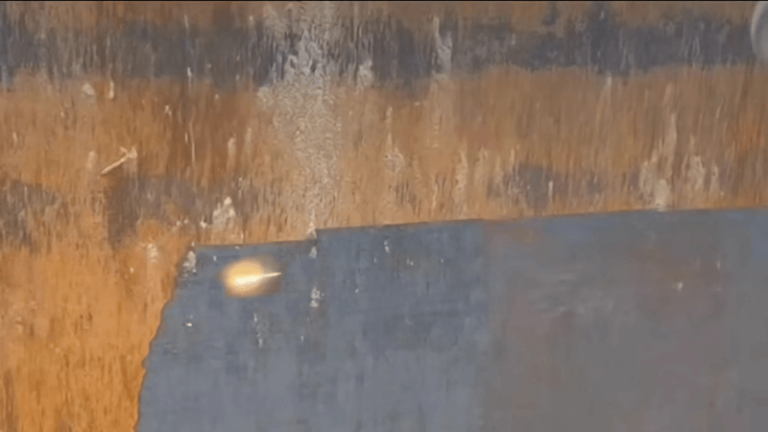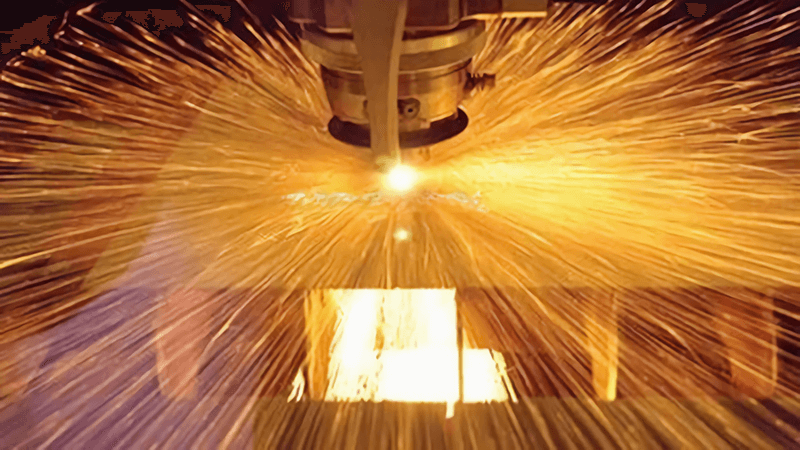
When it comes to cutting metal, traditional methods just don't cut it anymore—pun intended. Whether you're working in manufacturing, automotive, or construction, precision and efficiency are essential for staying competitive. But how can you achieve both while keeping costs down? The answer lies in laser cutting technology. With its precision, speed, and ability to reduce waste, a laser cutting machine could be the game-changer your business needs.
Laser cutting machines for metal are fast, precise, and cost-effective solutions for industries worldwide. They deliver perfect cuts with minimal waste and offer huge savings over time. Laser cutting machines offer substantial benefits in terms of efficiency, precision, and cost savings. Their ability to perform high-speed operations with remarkable accuracy makes them an invaluable asset in modern metal fabrication processes. As industries continue to seek ways to improve productivity while minimizing costs, laser cutting technology stands out as a leading solution.
Now that you know the basics, let’s dive deeper into the world of laser cutting. I’ve worked in this industry long enough to know just how much of a difference these machines can make. In fact, if you’re still using traditional methods, you might be losing time and money without even realizing it.
What is a Laser Cutting Machine and How Does it Work?
Before we get into the nitty-gritty of how laser cutting improves your business, let’s first understand how the technology works. A laser cutting machine uses a high-powered laser beam to melt, burn, or vaporize material. Unlike traditional cutting methods, which rely on physical force or abrasive material, lasers provide a cleaner and more efficient way of cutting metal.
Laser cutting machines typically use either a fiber or CO2 laser. Fiber lasers are more efficient, providing faster cutting speeds and higher precision, while CO2 lasers are better for thicker materials. When you combine high power with advanced software, you get precision cuts that can be as small as a few microns!
Laser cutting machines are faster than traditional cutting methods.True
Laser cutting can be up to 10 times faster than traditional methods, especially in complex cuts, improving productivity.
Laser cutting machines require minimal maintenance compared to traditional cutting methods.False
Laser cutting machines require more frequent and complex maintenance due to their advanced technology and precision components.
Main Components of a Laser Cutting Machine
-
Laser Source:
- The laser source generates the laser beam, which is the cutting tool in the laser cutting process. It typically uses fiber, CO2, or solid-state technology to produce the beam, depending on the type of machine.
- Types: Fiber laser (for metals) or CO2 laser (for non-metals).
- Function: Provides the energy required for cutting through materials.
-
Optical System:
- This system directs and focuses the laser beam to the cutting area.
- Components: Mirrors and lenses.
- Function: Focuses the laser beam into a fine spot for precise cutting.
-
Cutting Head:
- The cutting head holds the focus lens and controls the position of the laser beam.
- Components: Focus lens, nozzle, and sometimes a sensor to monitor the cutting process.
- Function: Ensures the laser is focused on the material surface and manages the gas flow during cutting.
-
CNC Control System:
- The CNC (Computer Numerical Control) system controls the movement of the laser cutting head and the material being cut.
- Components: Software, motion control system, and motor drivers.
- Function: Executes the cutting paths based on the design file, ensuring precision and automation.
-
Assist Systems:
- These systems support the cutting process by providing necessary elements like cooling and gas flow.
- Types:
- Assist Gas System: Delivers gases like oxygen, nitrogen, or air to assist with cutting by removing molten material and preventing oxidation.
- Cooling System: Prevents overheating of the laser source, cutting head, and other components.
- Fume Extraction System: Removes fumes and smoke created during cutting for a cleaner and safer environment.
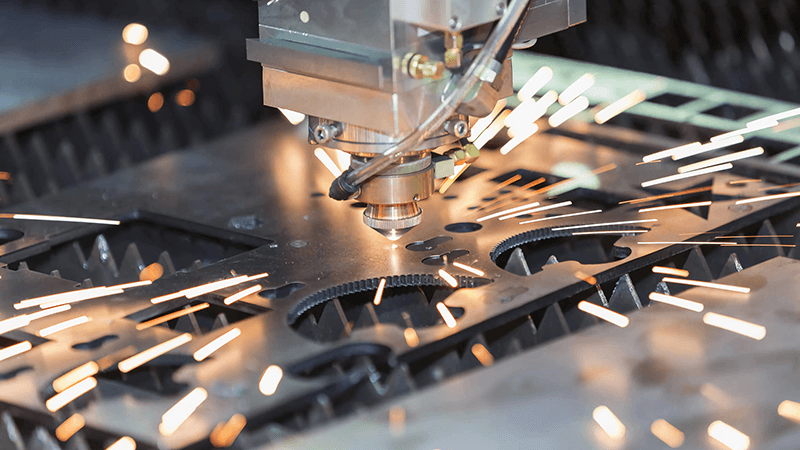
Efficiency in Laser Cutting: A Game-Changer
One of the most significant advantages of laser cutting is efficiency. Traditional cutting methods, such as shearing or sawing, are slow and often require multiple passes to achieve the desired cut. A laser cutting machine, on the other hand, can cut through metals with incredible speed and precision. This means more parts can be produced in less time, reducing your overall production time and increasing throughput.
According to the study, laser cutting can be up to 10 times faster than traditional methods, especially in complex or detailed cuts. And don’t forget the setup time—it’s significantly reduced, too. There’s no need to create custom dies or tooling, and the machine can adapt to various material thicknesses quickly.
This increase in efficiency directly impacts the bottom line. The faster your production process, the more you can produce, and that means more revenue. Time is money, after all!
Differences in Maintenance Requirements Between Laser Cutting and Traditional Cutting Methods
When comparing the maintenance requirements of laser cutting machines to traditional cutting methods, several important differences stand out. These differences stem from the advanced technology of laser cutting, the complexity of the machinery, and the different operational environments in which they operate.
Frequency and Type of Maintenance
-
Laser Cutting Machines: Regular and thorough maintenance is critical to ensure optimal performance and precision. This typically includes:
- Daily Maintenance: Cleaning of key components such as the cutting head, mirrors, and dust collection systems. Operators also need to check cooling systems, electrical connections, and ensure that the software is up-to-date.
- Laser Cutting Head: Regular inspections for cleanliness and obstructions are necessary to avoid compromised cutting precision. The cutting head may need cleaning to prevent any debris from affecting the laser beam's focus.
- Nozzle Replacements: Nozzles wear out due to the intense heat and pressure from the laser beam and typically need to be replaced on a daily or weekly basis.
- Cooling Systems: Ensuring that cooling systems are functioning properly is crucial to avoid overheating of sensitive components like the laser source.
-
Traditional Cutting Methods: The maintenance for traditional cutting methods is generally simpler and less frequent:
- Routine Maintenance: Tasks like lubrication of moving parts, cleaning after each shift, and occasional tightening or adjustments to machine components are common.
- Frequency of Maintenance: Depending on the usage, more comprehensive inspections may occur on a bi-weekly or monthly basis. The focus is largely on the mechanical components, such as blades, saws, or cutting edges, rather than on sophisticated electronics or optics.
Complexity of Maintenance Tasks
-
Laser Cutting Machines: The complexity of maintenance for laser cutting machines is higher due to the advanced technology involved. Key maintenance tasks include:
- Laser Optics: Ensuring that the lenses, mirrors, and laser source are aligned and clean is crucial. Any misalignment can affect cutting accuracy and quality.
- Gas Flow: Laser cutting relies on a precise flow of gases, such as oxygen or nitrogen, to achieve clean cuts. Obstructions or leaks in the gas flow can cause inefficient operation.
- Cooling Systems and Circuits: Checking the integrity of cooling systems and electrical circuits is necessary to prevent overheating or electrical failures.
- Drive Systems: Regular inspections of the motion systems (motors, drives, and rails) are required to ensure smooth and accurate movements of the cutting head.
-
Traditional Cutting Methods: Maintenance for traditional machines is typically simpler, often involving:
- Lubrication: Regular lubrication of moving parts such as gears, rails, and mechanical arms.
- Blade Replacement: The cutting blades or edges often need to be replaced as they wear down, but this is a relatively straightforward task.
- Mechanical Adjustments: Tasks like adjusting the tension of cutting blades or replacing worn parts are often quick and easy.
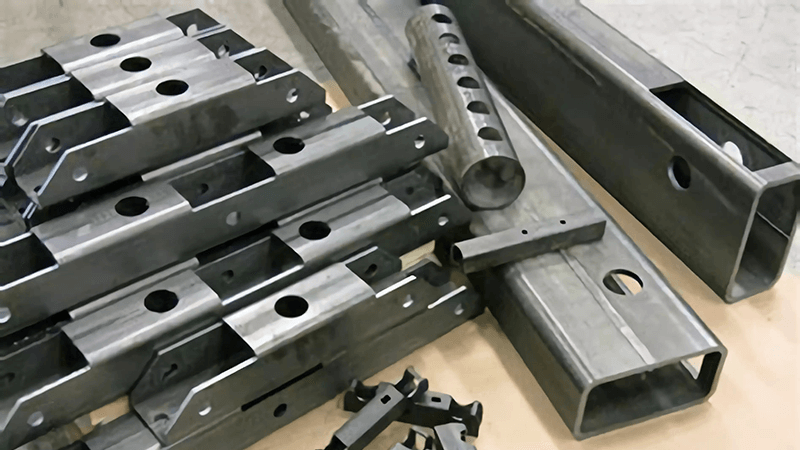
Required Skills and Training
-
Laser Cutting Machines: Operators need specialized training due to the technological complexity of the machines. This includes:
- Laser Optics Knowledge: Operators must understand laser beam behavior, optics, and how to maintain them properly.
- Cooling Systems and Gas Flow: Understanding the mechanics of cooling systems and how to manage gas flow is essential.
- Software Operation: Operators should be familiar with the software that controls the machine and how to troubleshoot common issues.
- Advanced Troubleshooting: In the event of a malfunction, operators must be able to diagnose and resolve technical issues related to the laser and other electronic components.
-
Traditional Cutting Methods: The skills required for maintaining traditional cutting machines are generally less specialized. Operators need basic mechanical knowledge:
Basic Mechanical Knowledge: Operators should be able to perform routine tasks like lubricating parts, replacing worn-out blades, and making minor mechanical adjustments.
Operational Safety: Training is often focused on safe operation and maintenance practices, as traditional cutting machines are more focused on mechanical components.
Impact on Production
-
Laser Cutting Machines: Due to their complexity and the critical nature of precision, any downtime in a laser cutting system can have a significant impact on production schedules. Without regular preventive maintenance, unexpected breakdowns can lead to costly halts in production, affecting the overall efficiency.
- Preventive Maintenance: Regular maintenance helps to minimize these risks and ensures that the machine operates without interruption. Prolonged downtime can be very costly, especially in industries that require fast turnaround times.
-
Traditional Cutting Methods: The impact of maintenance on production is typically less severe. Traditional machines are often easier to repair and can be kept operational even with minor issues. Additionally, downtime may be shorter since repairs are usually simpler and can be done quickly, often without halting the production process entirely.
Additional Considerations
-
Laser Cutting Machines:
- Laser Source Lifespan: The lifespan of the laser source itself can vary, but it will need to be replaced after a certain number of operating hours, which requires careful planning and budgeting.
- Precision Components: Due to the need for high precision, even small errors in maintenance (like misaligned optics) can lead to significant quality issues in cuts, leading to the need for more frequent and more precise maintenance checks.
-
Traditional Cutting Methods:
- Tool Wear: The wear and tear on tools like saw blades or cutting edges can be a consistent maintenance requirement, but it is often a predictable process that can be planned for with fewer surprises.
- Structural Wear: Over time, traditional machines may experience wear on structural components, which may require occasional repairs or replacements to maintain machine stability.
Laser cutting machines can adapt to various material thicknesses without needing custom dies or tooling.True
Laser cutting machines can adjust quickly to different material thicknesses, reducing setup time and increasing flexibility.
Fiber lasers are better for cutting non-metal materials compared to CO2 lasers.False
CO2 lasers are better suited for cutting non-metal materials, while fiber lasers are more efficient for metals.
Precision and Accuracy: Perfect Cuts Every Time
Another area where laser cutting truly excels is precision. Have you ever experienced the frustration of a slight misalignment or a cut that just isn’t clean enough? That’s where lasers shine. Laser cutting machines offer incredible accuracy, with tolerances as tight as ±0.1mm. This level of precision is difficult to achieve with conventional tools, especially when dealing with intricate designs or thin materials.
The accuracy of laser cutting machines also reduces the need for secondary operations, such as deburring or reworking. The cutting process is clean and precise, meaning there’s less human error involved and fewer materials wasted.
And let’s not forget about repeatability. Once a design is programmed into the system, it can be reproduced consistently, making it ideal for mass production. This kind of precision is one of the reasons laser cutting is favored in industries like aerospace, automotive, and medical device manufacturing.
Cost Savings with Laser Cutting Machines
You may be thinking, "But what about the cost of the machine itself?" While it’s true that laser cutting machines can have a higher upfront cost compared to traditional methods, the long-term savings more than make up for it.
For starters, laser cutting minimizes material waste. The precision of the cuts means that each piece is utilized to its fullest potential, reducing the amount of scrap material. Plus, laser machines are highly efficient, consuming less energy and reducing operational costs.
On top of that, the automation of the laser cutting process reduces labor costs. Once the system is set up, it requires less manual intervention, which means fewer workers and less time spent on each job. According to this article, companies have reported up to a 30% reduction in labor costs after transitioning to laser cutting.
Additionally, laser cutting machines have fewer maintenance requirements compared to traditional cutting equipment. There’s no need to replace cutting tools or sharpen blades constantly. This not only saves on material costs but also on downtime, which can be costly in a busy production environment.

The Future of Laser Cutting Technology in Metal
As with any technology, laser cutting is constantly evolving. The machines of tomorrow will likely offer even more speed, precision, and energy efficiency than today’s models. For instance, new developments in fiber lasers are increasing the ability to cut thicker metals at faster speeds. And advancements in automation and AI could make the process even more streamlined and intelligent.
At Kirin Laser, we are always on the lookout for new developments in the industry to ensure that our products meet the highest standards. Our 3kW 4-in-1 laser welding machine is already leading the charge in Europe for its exceptional cost-performance ratio.
How to Choose the Right Laser Cutting Machine for Your Business
So, how do you choose the right laser cutting machine for your business? It really depends on your needs. Factors like material type, thickness, and cutting speed should be considered. For example, if you’re cutting thin metals or need high-speed production, a fiber laser might be the best fit. If you’re working with thicker metals, a CO2 laser might be more appropriate.
The power of the laser is another important factor. Higher power lasers can cut through thicker materials faster, but they come at a higher cost. Be sure to assess your specific production needs and balance the machine’s capabilities with your budget.
Finally, consider the support and service that comes with the machine. A good manufacturer will offer not only the equipment but also training and after-sales support to ensure that you get the most out of your investment.
Related Questions to Consider
Can a Laser Cutting Machine Handle All Metal Types?
Laser cutting machines can effectively cut a wide variety of metals, such as:
- Steel (both stainless and mild)
- Aluminum
- Copper
- Brass
- Titanium
However, different types of lasers are better suited to specific materials. Fiber lasers are ideal for cutting metals, including reflective materials like aluminum and copper, due to their shorter wavelengths. On the other hand, CO2 lasers are typically used for cutting non-metal materials like wood, plastic, and acrylic. The thickness of the material also plays a role in determining the appropriate laser power for cutting.
Laser cutting machines are significantly more energy-efficient than traditional cutting methods.True
Laser cutting machines are more energy-efficient due to their high precision and speed, reducing the overall energy consumption in production.
Laser cutting machines are less accurate than traditional methods due to the reliance on laser beams.False
Laser cutting machines offer remarkable accuracy, with cuts as small as a few microns, far surpassing traditional cutting methods.
What Maintenance is Required for Laser Cutting Machines?
Regular maintenance is essential to ensure a laser cutting machine operates at its best and lasts longer. Key maintenance tasks include:
- Exterior Cleaning: Keep the machine’s exterior clean to prevent dust buildup.
- Laser Cutting Head Inspection: Ensure the cutting head is clear of obstructions and properly cleaned.
- Drive System Maintenance: Inspect motors and gearboxes for any debris or wear.
- Cooling System Checks: Monitor coolant levels and replace fluids when necessary.
- Circuit System Care: Clean electrical components and check for corrosion.
- Routine Equipment Inspections: Regularly check the laser, cooling systems, and gas flow systems.
- Software Updates: Ensure the machine’s software is kept up-to-date for optimal performance.
How Much Does a Laser Cutting Machine Cost?
Laser cutting machine prices vary widely based on the type and capabilities:
What Industries Benefit the Most from Laser Cutting Technology?
Laser cutting technology is used across many industries for its precision and efficiency. Key sectors include:
- Automotive: For manufacturing intricate parts with high repeatability.
- Aerospace: To create lightweight yet strong components.
- Medical Devices: Essential for producing precise instruments and components.
- Electronics: Ideal for creating small parts with tight tolerances.
- Construction & Architecture: Used for custom designs and structural components.
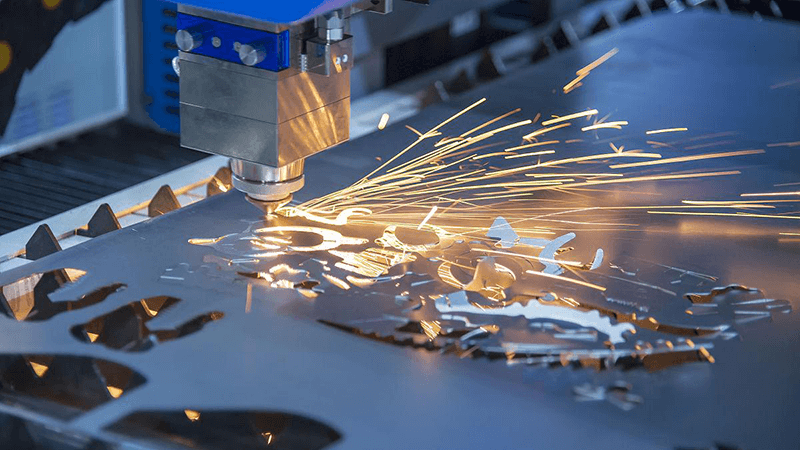
Conclusion
Laser cutting technology is revolutionizing the way industries approach metal fabrication. With its unmatched efficiency, precision, and cost-saving capabilities, it’s an investment that pays off in the long run. Whether you’re looking to improve production speed, reduce waste, or achieve perfect cuts every time, a laser cutting machine is the tool you need. Don't let outdated methods hold your business back—upgrade to laser cutting and watch your operations thrive.
Contact us to get your perfect laser cutting machine!
References:
- "Key Features to Look for in a Metal Laser Cutting Machine", from Kirin Laser.
- "Advantages of Cutting by Laser: Precision, Speed, and Versatility", from Kirin Laser.
- "Why Fiber Laser Cutting is the Future of Precision Manufacturing?", from Kirinn Laser.
- "Guide to Laser Cutting Focus Adjustment and Method Selection for Optimal Efficiency and Quality", from Kirin Laser.
- "Why Choose a Laser Cutting Machine for Steel?", from Kirin Laser.
- "How to Optimize Your Laser Cutting Process for Better Results?", from Kirin Laser.
- "Laser Cutting Metals: Everything to Know", from MC4U.
- "Laser Cutting Machines Prices: What You Need to Know About Buying a Cutter", from SA Laser.

